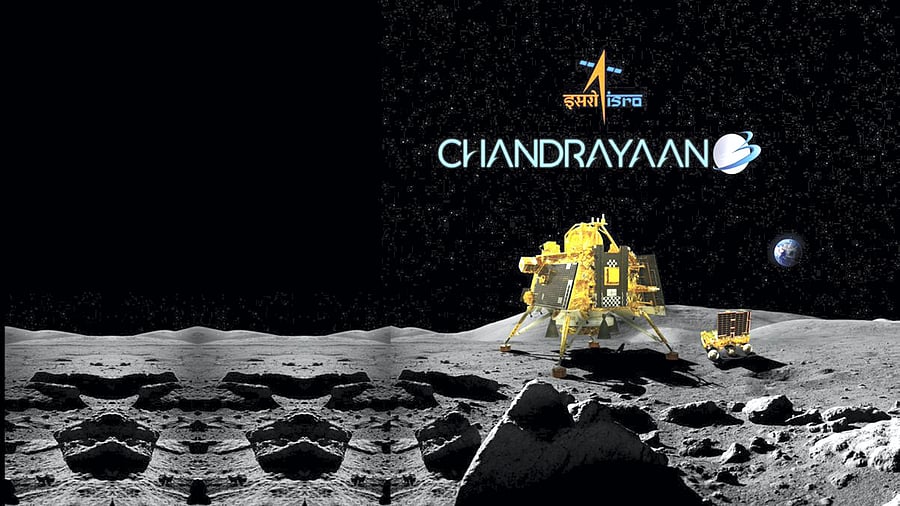
An illustration showing the soft landing of ISRO's 'Chandrayaan-3' on the surface of the moon.
Credit: PTI Photo
The Chandrayaan-3 mission has been designed with fail-safes considering what went wrong with Chandrayaan-2, said ISRO chairman, S Somanath.
Vikram will successfully complete the landing even if all the sensors malfunction and the engines shut off.
However, in case the spacecraft's soft landing fails, here are the possible alternatives:
1. Second attempt for soft landing on the Moon
Chandrayaan-3 will attempt another soft landing on the Moon’s south pole for the second time on August 24, if the soft landing fails today.
The soft landing process is to begin at 5:45 pm after internal clerical checks and only when the Sun rises on the Moon. In the next 17 minutes, also dubbed as “17 minutes of terror,” the lander will begin to fire its engines and prepare for landing.
In order to land, the spacecraft must move from a horizontal position to a vertical one, thus making this the most crucial part.
“If everything fails, if all the sensors fail, nothing works, still it (Vikram) will make a landing. That’s how it has been designed — provided that the propulsion system works well. We have also made sure that if two of the engines (in Vikram) don’t work this time also, it will still be able to land,” the ISRO chairman stated.
2. Next lunar sunrise
In case Chandrayaan-3 fails to make a soft landing today, there will still be a window of 14 days open for the spacecraft to try and make a soft landing, as one lunar day is equivalent to 14 earth days. The next window will be available when the Sun rises on the Moon again.
3. Chandryaan-3 will hover at its current position
In case of a landing failure, the spacecraft will hover in its current orbit of 25kmX134km, waiting for its next landing attempt.
As we already know, Chandrayaan-2 had to witness failure as it was unable to accomplish a soft landing. The communication with its lander was lost when the spacecraft was at an altitude of 2.1 km above the surface of the moon and it crash-landed on September 7, 2019.
Chandrayaan-3 was created to rule out the possibilities that could have caused Chandrayaan-2 to crash land.
“If it doesn’t land tomorrow owing to whatever factor, whether the health of the lander or a break in communication, we will attempt the landing again within 24-50 hours. Meanwhile, alternate landing sites will also be considered,” S Somanath added.
